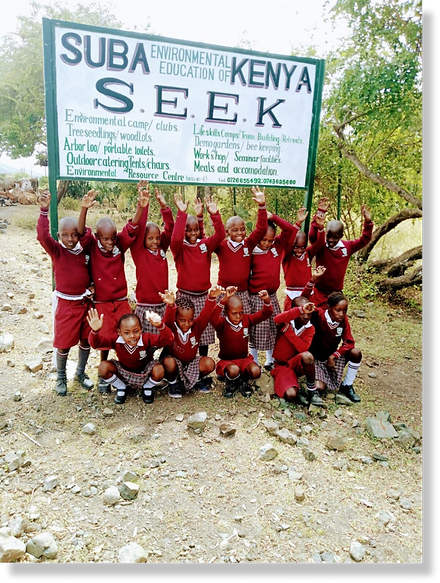
.png)
Today's Bright Light Students are Tomorrow's Environmental Activists
"Until you dig a hole, you plant a tree, you water it and make it survive,
you haven't done a thing. You are just talking."
- Wangari Maathai – Kenyan Activist and Nobel prize winner-Environmentalist
Kenya is home to extraordinary wildlife, with vast safari parks that host some of the world’s most iconic animal migrations. The government’s commitment to protecting this natural heritage is evident through anti-poaching policies and conservation efforts. Many international organizations fund and maintain sanctuaries which rescue, raise and then rewild these animals to their natural habitats.

These protections are deeply intertwined with Bright Light’s broader environmental goals—safeguarding wildlife, preserving the natural world, reversing pollution damage, adopting sustainable lifestyles, and educating the Rusinga community about climate change and what they can do about it. A planet-friendly environment is essential for the survival of future generations. So is the balance of ecosystems that communities like Rusinga need to establish healthy future growth trends. It's something our students learn and will carry forward.
.png)



Located next to Lake Victoria, a vital but environmentally compromised Rusinga resource, our school teaches students about the lake’s restoration and protection. Students learn how to reduce pollution trends affecting the lake, which is the main source of food and livelihood for the local fishing industry. Part of the Bright Light curriculum is to instill in them a deep sense of responsibility for their surroundings, and Rusinga’s future.
Bright Light Academy has started to embrace "smart farming" techniques to maximize efficiency for growing vegetables. Students learn innovative agricultural practices — maximum yield using minimum space — enabling our school to grow food while conserving water and soil. These techniques can serve some of the immediate nutrition needs of the school. Expanding these smart farms is a future goal, providing needed food and showing students a blueprint for long-term environmental sustainability.


Beyond the classroom, Bright Light includes an environmental component in our monthly health classes for parents. Educating and including families in this shared commitment to a sustainable future strengthens the Rusinga community. One day we hope to visit homes and help students’ families adopt these practices.

%202.png)
.png)
.jpeg)